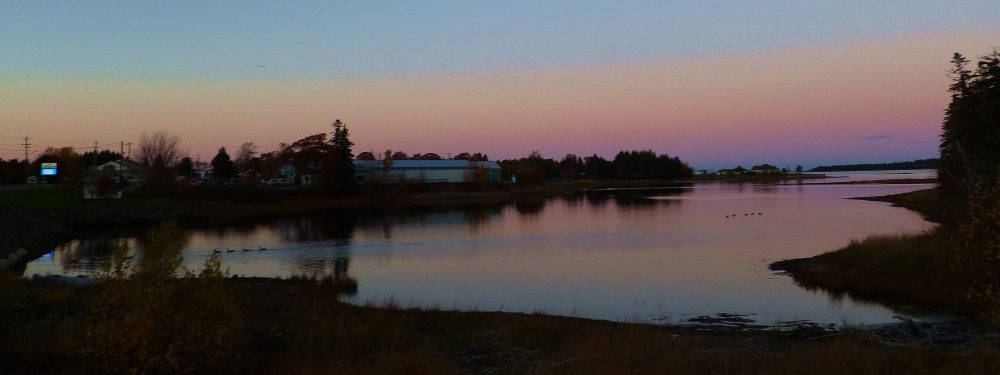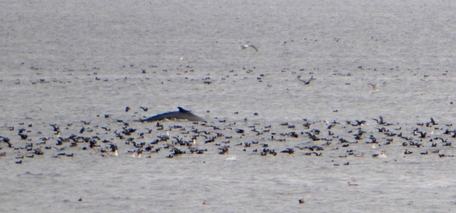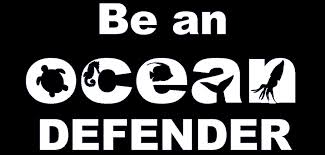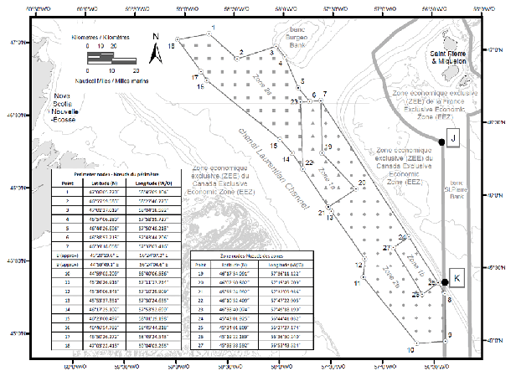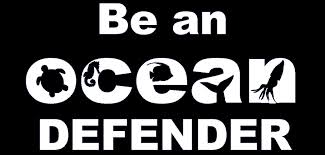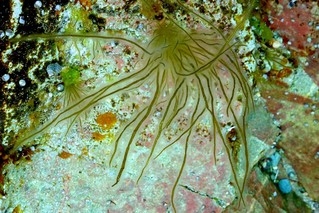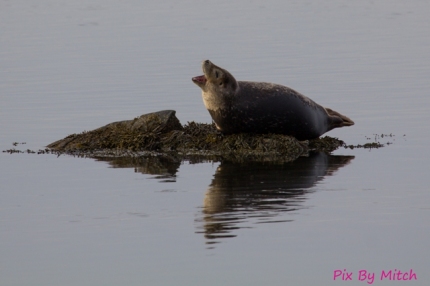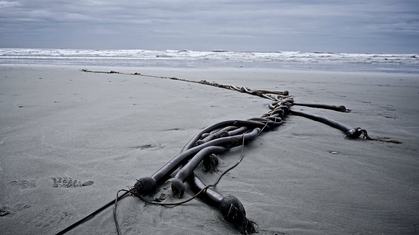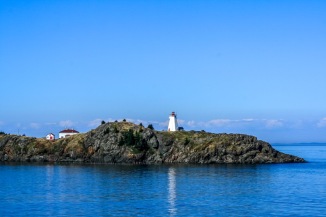
Submission regarding Bills C-68 and C-69 to:
- Honourable Ministers Jim Carr, Marc Garneau, Dominic LeBlanc, and Catherine McKenna, and to the Standing Committee of Parliament on Environment and Sustainable Development.
From:
- Ann Pohl, on behalf of Kent County NB Chapter, Council of Canadians (coc.kent.county.nb@gmail.com — March 15, 2018)
During the various stages of consultation on revitalizing and reorienting the Acts contained in Bills C-68 and C-69, members of our chapter of the Council of Canadians participated in three public sessions and submitted several related briefs to government.
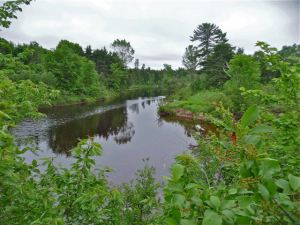
Our Neighbourhood
These new Bills were introduced in the federal parliament on February 6 and 8, 2018. More recently the Government of Canada made a call-out for comments on C-69 in particular, saying submissions should be filed with the Standing Committee as soon as possible. However, we also have some concerns about C-68.
We have taken every opportunity to understand what is envisaged by the Bills. In general we are pleased to see a number of proposals for positive initiatives, but there are substantial gaps and some serious concerns. Here then, in point form, are our comments for how to improve these proposed Acts to provide the quality of environmental protection and management that our grandchildren need.
Concerns about the Review Panels
- The Impact Assessment Agency (IAA) is supposed to be able to independently evaluate proposals based on science, traditional/community knowledge, and other factors. Conflicts of interest may well undermine these good intentions because Bill C-69 authorizes at least one member (possibly more) of the Canadian Energy Regulator (CER), Canadian Nuclear Safety Commission (CNSC), and/or Nova Scotia or Newfoundland and Labrador Offshore Petroleum Boards to sit on the IAA’s review panels. For example, CER has no requirement to consider climate pledges or cumulative impacts: there is not one mentions of climate change in the entire proposed CER Act in Bill C-69. Each of these agencies is supposed to provide the IAA with a roster of panelists to choose from, putting their experts inside the decision-making process to advocate/lobby for the energy industry. This opportunity, this place of honour, is not extended to environmental organizations.
- The Government’s promotion of this legislation has stressed that there will be one process for all assessments. Yet, this does not seem to be the case.
-
- It appears that not all proposals relevant to the offshore petroleum boards will be required to go through the CCEA impact assessment process: the NS and NL/LB offshore boards will also continue their own assessment processes. Although Bill C-69 gives the CER and IAA their own multifunctional mandates and scientific capacities, the offshore boards’ mandates narrowly and clearly favour offshore oil and gas development with no meaningful checks and balances for impact on the environment. Effectively, they have greater authority and autonomy through Bill C-69.
- Furthermore, the Bill empowers the Minister to substitute provincial processes that he or she deems to be “equivalent” for the proposed new federal IA process.
- The new IAA will continue the faulty but cost-saving practice of relying on industrial proponents to research, report on and advise government on the relevant environmental concerns in their projects, and how to address these issues. To stretch an analogy we have used many times before, this is akin to asking the fox to report on the structural concerns related to a proposed hen-house, and how to address these matters.
Discretionary Power of “The Minister” in proposed new Acts:
- Although hearing panels can identify adverse impacts, the Minister (or Cabinet, or “Governor in Council”) retains very broad discretionary powers under Bills C-68 and C-69. Some specific reasons for concern about this in regards to the IAA include:
-
- It appears the Minister can invoke a very broad “public interest” determination to short-cut to approval at various stages of an Impact Assessment. the Minister’s uncircumscribed power to determine what is relevant in making her or his decision totally undermines the pledges this government to restore public trust, ensure transparency/accountability, and ensure that decisions are based on valid information. As it stands, political considerations could quash all indicators of what is truly in the public interest, allowing for a decision that is instead in the interest of corporations but would be terrible for the environment and population health.
- The IA process addresses only major projects designated by regulation or Ministerial order. Smaller projects that may cause dire local or ecosystem impacts are not going to be caught through this mechanism, moreso because it appears the Bill allows the IAA to forego impact assessment for designated projects based on Minister’s discretion. As well, the timelines for public input are quite restrictive.
- It is not clear at all how regional, strategic assessment, and public input will influence minister’s determination, and the Minister is not even required by the proposed legislation to respond to these inputs.
- While many of the changes in Bill C-68’s rewrite of the Fisheries Act are excellent, there is a fundamental weakness in the vague wording that the Minister “may or may not” (emphasis added) consider: “(a) the application of a precautionary approach and an ecosystem approach; (b) the sustainability of fisheries; (c) scientific information; (d) traditional knowledge of the Indigenous peoples of Canada that has been provided to the Minister; (e) community knowledge; (f) cooperation with any government of a province, any Indigenous governing body and any body — including a co-management body — established under a land claims agreement; (g) social, economic and cultural factors in the management of fisheries; (h) the preservation or promotion of the independence of licence holders in commercial inshore fisheries; and (i) the intersection of sex and gender with other identity factors.” All of these are crucial factors that must be considered in all cases where they are relevant, and most likely that would be virtually all cases. A simple change to “the Minister will” is imperative.
- Given the complexity of Bill C-69, it is not clear if this issue of broad discretionary power is also a concern in regards to the new proposed Canadian Navigation Protection Act. If so, that must be addressed as well. However, it is noteworthy that the Minister (in this case, of Transport) will have discretionary powers to act directly in regards to obstructions in navigable waters. Is this a new power, previously absent? Perhaps we are being too presumptive, as the example given by the government is sunken ships, but would this also include the right to take whatever steps are necessary to remove water protectors who are exercising their rights to peacefully assemble in the water?
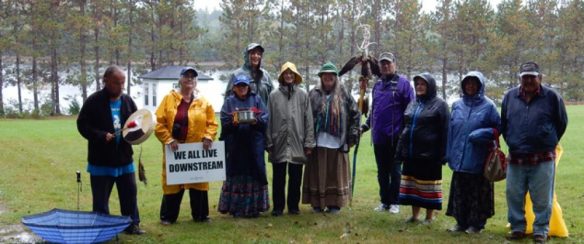
Walk to Protect the Water, Sikniktuk Mi’kma’ki, Fall 2016
What Is/Is Not Protected in the Proposed Canadian Navigable Waters Act:
- Notwithstanding the issue of Ministerial discretion (mentioned above), the new Act does not restore protections to the vast majority of Canada’s waterways. The first problem is the Act’s definition of what is “navigable waters.” The usual understanding is that navigable waters are any river or lake deep enough to float a boat, but the new definition has four criteria that serve to seriously constrict the application of the Act to only specific navigable waterways. For example, it seems that a stream flowing through privately held extraction industry land might not fit the definition and therefore would be exempt from this Act’s protections, regardless of its potentiality to cause great bioregion damage if used for some industrial purposes.
- The proposed new Act sets out three categories of development that may take place on a waterway: minor works (that get approval without public input if they meet the established critieria); major works (dams, etc.), and works which are proposed for a lake or river on the Schedule of Navigable Waters. Only a few waterways are included in the current proposed Schedule of Navigable Waters, and it is incumbent on individual Canadians or over-stretched civil society and environmental organizations to apply to restore protections to the thousands of lakes and rivers navigated in Canada.
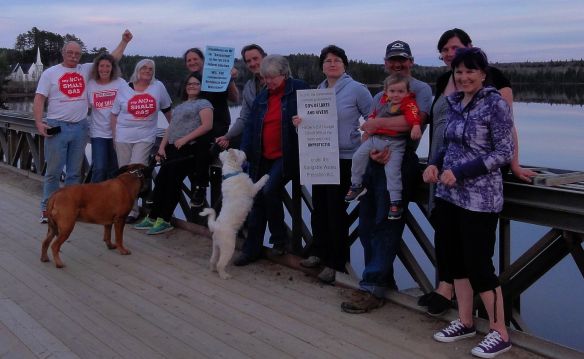
2 & 1/2 years ago: restore protections to EVERY lake and river.
Fisheries Act:
- Bill 68 sets out many positive aspects to this new proposed Act. The best part is that considerable meaningful protection is being extended to fish habitat — not just the habitat of food fishery fish, but all fish. Also included are a number of pathways for implementing these protections.
- Nonetheless, broad discretionary powers are available to the Minister, in a government department which has historically had major issues regarding public dialogue and engagement. Only “large-scale” projects will require a review. Worse still, there is a continued reliance on “Letters of Advice,” which have been identified as a signficant pathway for avoiding a bona fide assessment, and a matter of concern for many years among environmental organizations.
- Given the fragile state of many fish stocks and marine creatures in general, as well as the declining health of salt water environments around the planet, including notably the Gulf of Maine, it is essential to stay up-to-the minute on scientific and traditional knowledge and observations. For that reason, this Act should include a commitment to report on state of fish and fish habitat on an annual or biennial basis.
Public Participation:
- Although the issue of who has “standing” has been resolved in regards to the proposed CER, and there is a promise that the public will be allowed to participate earlier in the IA process, there is almost no detail on how the government will extend the rights to the public to participate in the various agency reviews, or along the steps of the IA process. All that the Minister is so far required to do is to provide “an opportunity to the public to participate” during the planning stage of an IA, and in any regional or strategic assessments (which are not fleshed out in the Bill, and remain “discretionary”). The IAA has some power to decide on participant funding if it has a budget to do so, but it is not evident if there is a similar provision for reviews done by other agencies, for example the offshore petroleum boards. It seems like this aspect has not been fully thought-out by the government. To restore public trust, more detail and certainty about the public’s rights and opportunity to participate is required.
- The “public registry” is a great proposal. Once it is up and running, this will be very useful to all those who are interested in a project or a bioregion’s health, provided that the public is aware of its existence and has good access to it. However, it is imperative that the registration system ALSO requires notifications from proponents directly to all affected populations rather than simply relying on an online registry.
Sustainability Criteria and Strategic Assessments:
- Other analysts have commented on definitions that are absent from these Bills. We note the definition for “sustainability” is so vague it could not be used to clarify any issue. For example, why does this definition not include the concept of ecosystem or bioregion? Fix this, or we will all be going the long, expensive way around, using the courts to detail these definitions.
- Similarly, there is very little useful detail on the proposed optional or discretionary regional or strategic assessments, although for the latter there is a federal government policy and process in place that has been standing still for almost a decade now.
Addressing the Climate Crisis
- The words “climate change” appear exactly four times in Bill C-69 – and only in the IAA Act. The first is in the title of the federal Minister McKenna; the second in the preamble to the Impact Assessment Agency Act; the third is in the list of “considerations” relevant for an impact assessment; and the last is in the list of factors for the Minister to keep in mind when making a “determination.” This is shocking considering that climate change is definitely the hugest environmental issue of our time, related to almost all other environmental and population impact and health issues.
- Between 2004 and 2009, the federal civil service developed this tool for strategic assessment (see references below), so it already exists. The standard for measurement is also available (Paris Agreement). In June 2017, the government of Canada undertook to begin Strategic Assessments on major environmental issues, and commited that the first one would address climate issues. The language in Bill C69 is vague on Strategic Assessments and gets us no closer to the task and completion of this initial climate strategic assessment. Time to get it going on this Climate Strategic Assessment now! This assessment would and must set the context for all the work done through impact assessments, panel reviews, Ministerial discretionary orders, regulation-based approval processes. Flowing from this, federal legislation can more effectively move urgently towards the 100% clean energy economy that will ensure survival for some life on our planet.
- Bill C-69 falls short in not creating an arms-length independent centre with a specific mandate for energy data collection, information and education. Despite much discussion about this prior to and throughout the consultation process, there is no plan. This data would enable viable scientific forecasts about what energy production is needed for the “national interest.” It is also crucial for monitoring Canada’s success in dealing with climate protection promises and goals.

Mandi’s contribution to our chapter’s Earth Day 2017 youth art exhibit.
Indigenous Peoples’ Rights to Free, Prior, and Informed Consent:
- Nowhere in these Bills is there reference to the United Nations Declaration on the Rights of Indigenous Peoples, which Canada has agreed to uphold and implement at all levels. This includes of course the principle of free, prior and informed consent in all stages of the impact assessment process. Good words are spoken but the legal requirements to enact this commitment, within the proposed legislation, are absent.
- If the CER is mandated to deliver on Indigenous (Aboriginal) consultation duties, will this hold up at the Supreme Court?
Putting the Money where the Mouth Is:
- We regret that we have not done a comprehensive review of what got funded and what did not in the federal budget for 2018. It appears that a considerable amount of money has been set aside to restore much-needed scientific, conservation, and enforcement capacity to the Departments of Fisheries and Oceans and of Environment and Climate Change, which were gutted of this expertise during the 10 years of the Harper government. If this money is spent for this purpose, great news!
- Funds are also needed for climate change research (and the database mentioned above), as well as strategic assessments of major industries such as fossil fuel hydrofracking, tar sands extraction, majors dams, methylmercury pollution associated with clear-cutting, drinking water aquifer and other source inventory, and water export impacts on Canada’s drinking water supply, as well as reinstating fresh-water and science research programs cut from federal departments, etc. When the government commits these funds, alongside the improvements to this legislation under discussion, as suggested above and by other environmental and population health organizations, then we will know that our grandchildren’s futures are more secure.
Risky and contentious deep water offshore fossil fuel exploratory drilling, by BP, south of Nova Scotia, was approved by Minister McKenna only a week before Bills C-68 and C-69 were introduced in Parliament. Elements of this proposal underscore many concerns we present in this submission. Thank you, merci, wela’liek for taking the time to review our concerns set out in this document.
References:
Blakes’ Business Class. Federal Government Overhauls Canadian Environmental Legislation
Canadian Environmental Law Association. The Federal Government’s Proposed Impact Assessment Act: Some Forward Progress, but Changes Needed to Ensure Sustainability.
Council of Canadians: Cautions to consider as Trudeau government tables water and energy project review legislation; Will today’s announcement usher in new legislation to protect every lake and every river?; Cautions to consider as Trudeau government tables water and energy project review legislation; (NWT Chapter.) Letter on C-69 to federal environment minister Catherine McKenna.
DeSmog Canada. ‘We’re Under Assault’: Feds Quietly Approve Deepwater Oil Drilling Off Nova Scotia.
Environmental Defence. WATCH: Putting all projects to the “Climate Test”
Government of Canada: Strategic Environmental Assessment; Environmental and Regulatory Reviews: Discussion Paper; (Department of Fisheries and Oceans) Better Management of Projects; Bill C-69.
Lawson Lundell LLP. Canada: Impact Assessment Agency – An Overview
Parliament of Canada. Bill C-69 House Debate.
West Coast Environmental Law Association: The problems with the new Canadian Navigable Waters Act; Sweeping new federal environmental law bill contains promising changes, say environmental lawyers
World Wildlife Fund – Canada. Impact Assessment Act needs to do more to safeguard nature.
York Faculty of Environmental Studies. (Sustainable Energy Initiative.) Has Trudeau Delivered? A Discussion of Bills C-68 and C-69
